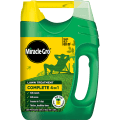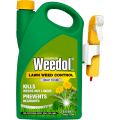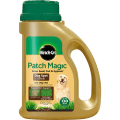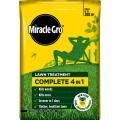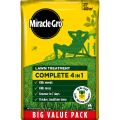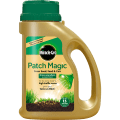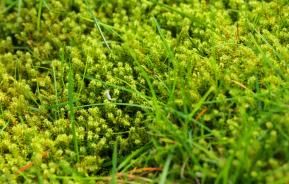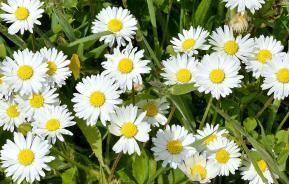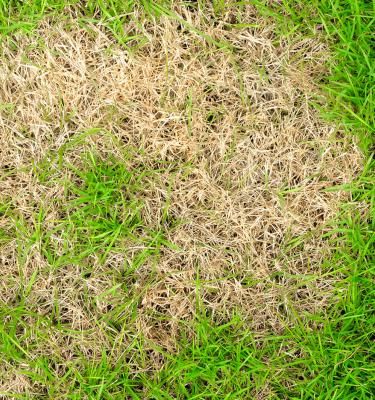
Common lawn problems and how to fix them
Learn about the most common lawn problems
If your lawn is looking a bit sorry for itself, then let us help you nurse it back to health! Here are some of the most common lawn problems, along with our suggested solution to help you fix them.
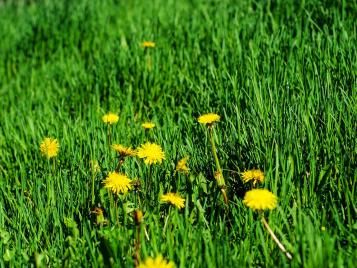
Lawn weeds
Many lawns contain weeds, and while some can look attractive and provide food for pollinators, they can also compete with grass for water, nutrients, and light, over time, they may take over large areas of your lawn. If you want to keep weeds in check without harming the grass, opt for a selective weedkiller or a granular lawn treatment such as Miracle-Gro® Complete 4 in 1, designed to target weeds while encouraging a healthy lawn.
Regular mowing encourages a thicker, healthier lawn that can naturally outcompete weeds and applying lawn feed during the growing season such as Miracle-Gro® Complete Lawn Food Concentrated Liquid will also strengthen the grass, keeping weeds in check.
There’s a growing movement to embrace flowering lawn weeds for biodiversity. If you’d like to support pollinators but still prefer a neat lawn, consider letting a section grow longer, allowing wildflowers to bloom without letting them go to seed. For as more informal effect, you could mow paths through your lawn, allowing the grass and flowering weeds to grow either side.
Weeds that benefit pollinators include dandelions, buttercups, daisies, lesser trefoil, black medick, common mouse-ear chickweed, yarrow and speedwell.
For more tips on maintaining a healthy lawn, check out our article ‘Getting your lawn looking great’.
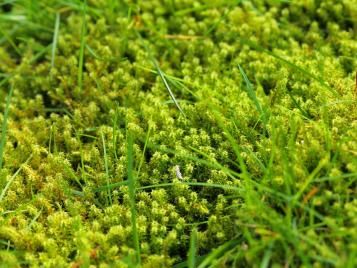
Lawn moss
Lawn moss can be another problem that will compete with your lawn for water, light and nutrients. Most active in the spring and autumn, moss is usually found where drainage is poor and the lawn is in the shade or very compacted.
Apply a lawn treatment containing a moss killer such as Miracle-Gro® Mosskill Liquid Lawn Care, and then try to remove the cause. Spiking (aeration), scarifying (raking) and top dressing will improve drainage and overseeding with a grass seed mixture especially suited for shaded areas such as Miracle-Gro® Shady Lawn Seed will help thicken the lawn and eventually will take over the moss. See our article ‘Preventing lawn moss’ for more details.
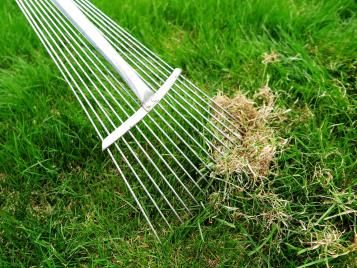
Lawn thatch
Lawn Thatch is a layer of dead organic matter that includes leaves, moss, dead grass and other debris at soil level. This thatch prevents water and nutrients getting down to the roots of the grass and stops air flow. If you leave this layer on, eventually the grass underneath will turn yellow and will be more likely to succumb to fungal disease.
Vigorously rake out this thatch in September, or more gently in early spring, with a garden rake or scarifier. The lawn will look worse to start with but pretty soon it will spring back to life. Top dressing with Miracle-Gro® Peat Free Lawn Dressing, after scarifying will also improve the root zone of the lawn grasses, as it reduces compaction and increases aeration as well as adding nutrients.
To prevent moss coming back, collect the grass clippings if your mower has a grass box, or rake up all clippings after each mowing. Always however, leave the clippings on the lawn after the very first mow of the season. Never allow autumn leaves to pile up on the lawn - rake them up often.

Pale/yellowing grass
This is often a symptom of nutrient deficiency, particularly nitrogen. Lawns go through a lot of wear and tear during the warmer seasons and are often exposed to harsh weather conditions throughout the year. Supplementary feeding with nitrogen-rich lawn treatments, such as Miracle-Gro® Complete Lawn Food Concentrated Liquid. will give your lawn the boost it needs to become lusher and greener, and with the addition of potassium, will help the lawn cope with cold and drought.
See our lawn feeding products section for more details.
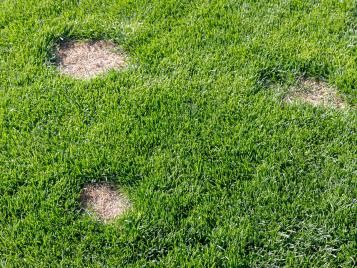
Pet spots on your lawn
Pets can be a problem especially if they repeatedly urinate in the same spot as this can cause scorching of the lawn and you may find you have lots of small yellow patches all over the lawn.
Try to get your dog to go somewhere out of sight, and if you can, quickly follow up with a watering can, but if this is impractical then use a special dog spot repair product like Miracle-Gro® Patch Magic Dog Spot Repair that is specially formulated to deal with this problem.
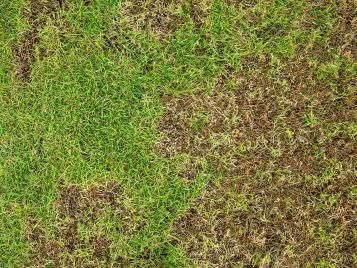
Scalped patches
This problem results from mowing the grass too short, often once the grass has grown really long. This may seem a great way to mow to save time but by scalping the lawn you not only put it under stress, but the bare patches become vulnerable to invasion by weeds and moss.
To solve this issue, fill in any obvious hollows with a lawn soil or top soil and mow the lawn regularly to a minimum of a couple of centimetres in length.
Bald patches can be reseeded with grass seeds and grass seed patching mixes.
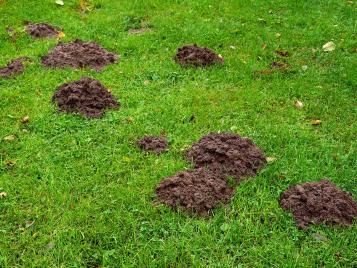
Worm casts and mole hills
Worm casts and mole hills can be another lawn problem that shouldn’t be ignored. When squashed, worm casts make ideal seed beds for weed seeds. When they appear, let them fully dry and then sweep them away with a stiff broom brush before mowing. Worm cast soil is ideal however to use in the garden and is especially good added to a potting mix, so rather than brush it away, collect it and mix in with your compost.
Mole hills are much harder to deal with, but the good news is that the soil makes an excellent soil conditioner and lawn dressing. Either collect the soil up to use on your garden or rake it out and then re-seed the bare patch. Unless you need a bowling green lawn, there is very little you can do but wait for the mole to move away and see the dug soil as a bonus.

